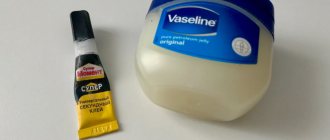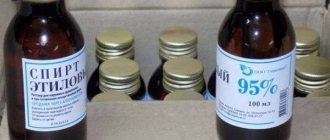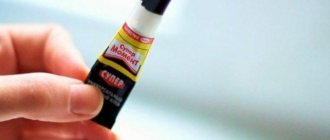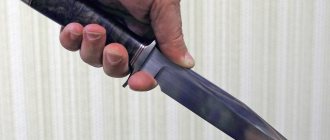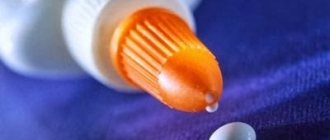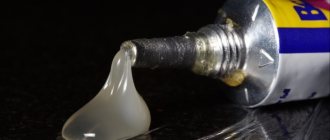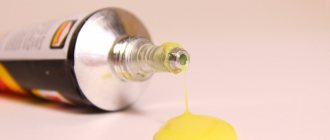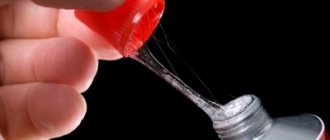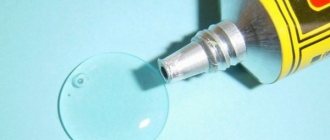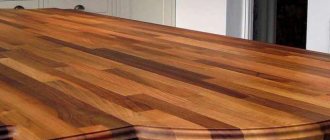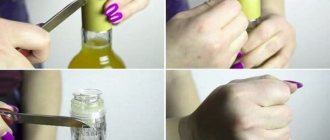Why is it difficult to remove glue from skin and nails?
Every surface has moisture, and there is also moisture in the air. It is this feature that affects the components contained in the adhesive; they instantly contribute to the bonding of surfaces. This is especially true for liquid mixtures, which instantly spread, penetrating into all pores, including the skin.
If glue is dropped onto the skin, a feeling of tightness immediately appears, but this will not harm your health in any way, since this occurs on the upper layer of the epithelium.
Superglue is also used for gluing false nails. This is not the best option due to the difficulty of removing artificial plates and removing the adhesive layer from the surface of a natural nail.
Superglue itself will not cause much harm if it is removed correctly. But if attempts are made to remove the hardened substance with a knife or bite off with teeth, then harm and damage to the skin or nail layer is caused.
If glue gets on the mucous membranes or eyes, immediately rinse the organs with running water and immediately seek medical help.
What you need to remove false nails
Many nails come off on their own after 10 days, so you just need to wait a little to remove them. If this does not happen, then you need to remove the linings earlier; you can carry out the removal procedure at home. To do this, you only need warm water and a hand bath.
Before the procedure for removing false nails, you must prepare all the products and tools.
When the nails have been glued on by a master (tips), you will have to be more active to remove them. You will need the following materials and tools:
- Hot water
- Foil
- cotton wool
- Manicure sticks
- Acetone
- Special nail remover
- Hand cream
Nail care after removing artificial nails
Oil bath
After implementing any method of removing false nails, it is important to carry out high-quality care of the nail plate. She should be provided with nutrition and hydration: take baths with essential oils , apply regenerating varnishes lubricate hands and nails .
For a week after removing your nails, you should not cover your nail plates with ordinary decorative varnishes, or extend your nails with any materials. Proper care will allow you to quickly restore and strengthen your nails, nourish them, and they will become stronger, denser, and shiny.
Superglue - the main assistant when breaking a nail?
The question of whether it is possible to seal a broken nail with superglue has a positive answer. Before you begin the procedure for restoring a broken nail, you must wash your hands thoroughly and make sure that there are no particles of oils or cream left on them. Then wipe them dry with a towel. This nail restoration method consists of several steps:
- It is necessary to cut off a small piece of material with which the nail will be sealed. The material itself can be taken either from a nail restoration kit, which is sold in cosmetic stores, or from a tea bag. In the first case, you will need a strip of fabric of such a size that you can wrap it around the entire plate, and fix the edges of the material under it. In the second case, you should use a strip of material from a regular tea bag, which is an excellent alternative to store-bought materials. If both are missing, you can use a coffee filter. The main criterion in the selection of material is its size; it is necessary that it covers absolutely the entire plate.
- Then the material is glued directly to the nail using superglue. To do this, apply a small amount of superglue to the plate. Using the tip of the applicator, carefully spread the glue over it. Then, using tweezers, you need to place the pre-cut material on top of the glue.
- If the nail restoration is carried out using a purchased repair kit, then you can use the included glue. It must be applied with a brush, also included in this set. It is important to monitor the material; folds should not form on it.
- In order to remove excess part of the prepared fabric, you can use nail scissors or regular scissors.
- If the material does not stick, then you should add one drop of glue on top of it.
- In order for the surface to be as smooth and even as possible, it is necessary to use a nail file to make the plate even and polish it. It is advisable to do this using a special polishing file and only after the glue has completely dried. The movements of the nail file should be unidirectional.
- Then the top coat is applied. A regular nail strengthener is also suitable for this stage; it will serve as additional protection for the surface.
- After 6 hours, you can already apply it to polishes, gel polishes and other products.
Instructions for removing false nails
Easy way
- Turn on hot water or pour water into the hand bath.
- Hold your hands under water .
- The glue will soften , the nails will come off easily and can be removed .
- Remove the remaining glue with a wooden stick or a cotton pad greased with soda.
- Let the nails dry, then polish them well.
- Apply nail restoration product.
Removing false nails using a bath
To be sure to peel off false nails, you can add a little soap (preferably baby soap) and soda (2 spoons per liter of water) to a bath of water (50 degrees).
Some types of glue come off in 2-5 minutes; to remove others, you will have to keep your hands in water for at least half an hour. The main thing is that the pad comes off without using force, otherwise your nail can be damaged. Watch the video to see how the process of removing false nails goes:
Using acetone
- or nail polish remover with acetone under the nail plate
- After a few seconds, pry the nail with a sharp stick , separate it and remove it.
- Using an orange stick and liquid, clean the nail plates.
Using a special product (remover)
Removing false nails with a remover
- cotton pad in tip remover , which is sold in specialized stores .
- Place the circle on the nail plate for 15-20 minutes, wrapping the nail in foil .
- the softened false nail with a wooden manicure stick - from the cuticle up.
- Remove remaining glue using cotton wool and sticks.
Sometimes the nails cannot be removed at the same time; some of them remain. In this case, you should repeat all the manipulations to remove the linings in a day.
Mechanical exfoliation
Abrasive agents—fine sandpaper, pumice stone, or a nail file—can help remove “Moment” from your hands. Rough mechanical impact can damage the skin. Therefore, the method is recommended for men whose skin is not as sensitive as that of women. After removing the main adhesive layer, you should wash your hands with soap.
Do not separate glued fingers and tear off dried glue with skin particles. Also, do not remove the film with sharp objects or fingernails.
A good alternative to the above products is a cosmetic scrub for the face or body. The scrub exfoliates the top layer of skin along with the adhesive film. You need to apply a small amount of product to the contaminated area and gently rub it in a circle. The adhesive film will gradually come off the skin.
Vinegar
Add a few drops of vinegar to 200 ml of warm water. Then moisten a cotton pad or sponge in the resulting solution and treat the adhesive film. If the glue remains in place, then you should not repeat the procedure. It is advisable to use another method. Vinegar should not be used if there are injuries on your hands.
After removing the superglue, wash your hands thoroughly with soap. Then it is recommended to apply a moisturizing or nourishing cream to the damaged area. If you don’t have cream on hand, you can use regular vegetable oil. You need to apply it for 20-30 minutes and then rinse off under running water.
Ways to remove glue depending on its type
Each type of glue has its own method of removal from the skin and nail:
- The silicate base is removed from the surface when washed off with soapy water and soda. The main thing is that it does not dry out completely, otherwise you will have to resort to using pumice. Ammonia can also be used to remove dried compounds like this.
- Regular school stationery glue will wash off with soap and water.
- Regular glue can be easily wiped off with soap, salt, oils, and nail polish remover.
- Viscous compounds can be removed with vinegar and alcohol.
- Liquid instant-setting compounds are very difficult to wipe off, so in order to avoid repeated wiping, it is better to immediately use solvents or acetone.
We recommend watching the video instructions:
Types and properties of glue
There are several types of glue, each of which has certain properties:
- Liquid mixtures - adhesion occurs within a second. This must be taken into account when working, especially if the base gets on the skin. Examples:
- Glue second 505 is a universal adhesive, transparent, hardens quickly, providing maximum adhesion.
- Super Moment Universal – super fast, waterproof, can withstand high temperatures.
When working with liquid mixtures, it is recommended to be careful, since the mixture, once it gets on the skin of your hands, is instantly absorbed, making it difficult to remove.
- Viscous mixtures - adhesion is achieved gradually, but this is a positive point, since there is time to correct inaccuracies when surfaces come into contact. Example:
- Universal Moment has the following types: “Moment-1”, “Gel”, etc. - transparent, waterproof, heat-resistant, the composition contains thickeners, which prevents it from spreading.
The use of viscous compounds will remove the glue from the surface of the skin and nail after some time.
Method No. 5. Bath of nail polish remover
- Wipe your fingers with an antiseptic (peroxide, miramistin, chlorhexidine, vodka, medical alcohol, etc.). Rub olive oil into your nail plates and do the same with your skin. Leave the mixture for fifteen minutes, repeat the steps 2-3 times.
- Such a move will make it possible to reduce the impact on sensitive areas, because the fingers will descend into the acetone-containing composition. Next, lubricate the skin around the nails with baby (very greasy!) cream, making a thick layer.
- Prepare a small bowl. Pour 1 bottle of nail polish remover into it. Dip the ends of your fingers into the product; it would be a good idea to trim the edge of the tips in advance.
- Wait 5-10 minutes, then pry up the artificial covering with a stylus in the cuticle area. Remove your nails and immediately wash your hands with antibacterial soap.
- Soak the sponge in nail polish remover and remove the remaining adhesive base. Disinfect the plate with hydrogen peroxide and rub in olive oil.
- Extreme caution must be exercised during the procedure. If you feel even the slightest burning sensation, remove your fingers immediately. Wash them and disinfect them with miramistin.
How to glue false nail tips with super glue at home???
Remove nail polish without acetone: 3 effective ways
How to glue false nail tips with super glue at home???
How long can you wear false nails?
It is necessary to choose false nails with a length greater than your own , and also purchase the highest quality models, then there will be no oxygen deficiency for the nail plate. But even correctly chosen nails cannot be worn for more than 3-4 weeks , because the glue still destroys the natural protective layer, deforms real nails, and dries them out.
In this case, we are talking about false nails, glued by a master in the salon or independently (tips). If your nails were glued on with a self-adhesive base , it is better to remove them after 4-7 days .
How to care for your pads
If you properly take care of the already glued overlay base, it will retain its beautiful surface longer and will last longer on your fingers. For this:
- Do not expose the molds to contact with acetone or substances that contain it. Such an impact will lead to the removal of the decorative coating or dissolve the artificial material.
- The mobility of the forms is eliminated by heating. The hot stream is directed onto the mold, and after heating it is pressed.
- Reducing the length will allow you to wear it longer. To do this, you can remove the length with special scissors or tongs and straighten it with a nail file.
Source of the article: https://mindal-nails.ru/raznoe/kak-otkleit-nogot-ot-superkleya.html
What not to do and precautions when working with glue
If the adhesive mixture gets on the epithelium and nails, then it is not allowed:
- Remove the layer with a knife, blade or other sharp objects. In this case, there is a danger of cutting off the epidermis layer.
- Remove dried material. This will lead to the formation of lacerations that take a long time to heal.
- If your fingers are stuck together, do not force them apart. This will cause the skin layer to rupture.
- If the glue just gets on the surface, you can remove it with a napkin or bandage. You should not immediately put your hand under the water, as this promotes even greater hardening.
- Gnawing with teeth. This will harm not only the skin, but also the enamel.
Careful handling of adhesive bases includes:
- carry out work with gloves;
- prepare a place to work, cover your knees and clothes;
- pin up your hair or use a cap;
- use eye protection;
- Keep the product away from children.
When to remove nails
Sometimes false nails need to be removed ahead of schedule
There are cases when the overlays will have to be removed ahead of schedule. This may be due to one or more nails peeling off. False nails can also interfere with daily activities or certain activities.
And if, during the examination, increased fragility of the nail plate, its detachment from the overlays, and other troubles were noted, then it is better to immediately carry out the procedure for removing artificial nails. In the future, extensions or stickers can be carried out only after 4-5 weeks.
You will have to remove and re-glue your nails if the quality of the glue is poor, which may become unusable in just a couple of days. In this case, the marigolds begin to sway and separate.
